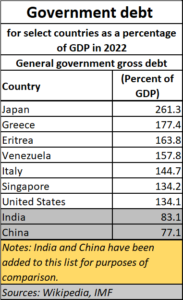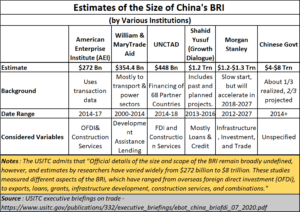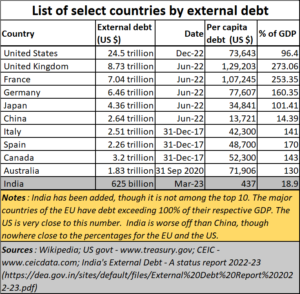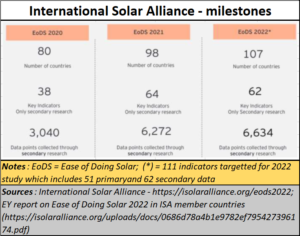Great plans for an India-ME-Europe corridor to mimic China’s BRI
By RN Bhaskar
On 9 September, the US While House put out a notification (https://www.whitehouse.gov/briefing-room/statements-releases/2023/09/09/fact-sheet-world-leaders-launch-a-landmark-india-middle-east-europe-economic-corridor/). It informed the world the following: “Today, we the leaders of the United States, India, Saudi Arabia, the United Arab Emirates, France, Germany, Italy and the European Union announced a Memorandum of Understanding committing to work together to develop a new India-Middle East-Europe Economic Corridor (IMEEEC).”
It went on to say that this landmark corridor is expected to stimulate economic development through enhanced connectivity and economic integration across two continents, thus unlocking sustainable and inclusive economic growth. “It said that through this corridor “we aim to usher in a new era of connectivity with a railway, linked through ports connecting Europe, the Middle East, and Asia. The United States and our partners intend to link both continents to commercial hubs and facilitate the development and export of clean energy; lay undersea cables and link energy grids and telecommunication lines to expand reliable access to electricity; enable innovation of advanced clean energy technology; and connect communities to secure and stable Internet. Across the corridor, we envision driving existing trade and manufacturing and strengthening food security and supply chains. Our approach aims to unlock new investments from partners, including the private sector, and spur the creation of quality jobs.”
The Indian government too gave press briefings and made a mention of this project on its own website run by the Press Information Bureau (https://pib.gov.in/PressReleaseIframePage.aspx?PRID=1956076).
The hype was tremendous.
But nobody asked two key questions:
- Can it match the scale and vision of the China directed Bridge and Road initiative (BRI)?
- Where will the money come from.
The US has made vague commitments about arranging the startup fundings, but if one considers the amounts that China has spent, it is not likely that the corridor will be able to match either the scope or the spending.
One of the most comprehensive documents on the BRI prepared by the United States International Trade Commission (USITC) (https://www.usitc.gov/publications/332/executive_briefings/ebot_china_briofdi_07_2020.pdf) admits that “Official details of the size and scope of the BRI remain broadly undefined, however, and estimates by researchers have varied widely from $272 billion to $8 trillion. These studies measured different aspects of the BRI, which have ranged from overseas foreign direct investment (OFDI), to exports, loans, grants, infrastructure development, construction services, and combinations.”
The announcements can therefore be best described as statements of intent. Without being backed with enough money, the entire scheme will be a non-starter. Of course, the ships that normally ply between the Middle East and India may now be called IMEEEC vessels. The roads that connect Saudi Arabia and Dubai to Europe may also get rechristened IMEEEC roadways. Some money may be spent, but not much, because, frankly, nobody, except maybe Saudi Arabia, has the funds.
The situation has become so bad that the US does not even have the funds to finance the Ukraine war. Instead, it has left the financing of the war to EU countries, though the war was started by the US and a war that the US wants to continue (https://asiaconverge.com/2022/02/ukraine-the-war-that-usa-wants/). Very deftly, it has reduced its own commitments to the war and rebuilding efforts, and has begun urging the EU to take up these costs. Naturally, the EU isn’t amused and has begun rethinking its role much to the annoyance of the US. Some countries have already decided not to back the war any long.
But as the Economist itself showed just a few days ago, the funds that will be available for the war have already begun diminishing. War financing woes may actually turn out to be the biggest incentive for peace.
Meanwhile, the US has begun focussing on another enemy – China. It wants to counter China in every way it can.
It first began ring-fencing China – in much the same way it did with Japan before the Second World war – something brought out brilliantly by award winning documentary maker in his video on “The Coming War on China”. China managed to blunt this strategy by first tying up with Pakistan by building the China Pakistan Economic corridor which would give it access to the Arabian Ocean. But then, the US provoked a war between Russia and Ukraine. Subsequent sanctions against Russia, only pushed the latter into China’s arms. Today Rusia supplies much of the oil and gas to China through the Sakhalin oil and gas pipelines (https://asiaconverge.com/2022/10/geopolitics-bring-russia-india-china-closer/). It has also begun building a canal into central China to supply it with fresh water.
The US wants to counter China, but has watched its strategies flounder. And that is where India fits in. Just as the US wooed Pakistan, in its war against Afghanistan and earlier against Iran, it now appears that the US wants to use India. The G-20 meet gave it two opportunities.
First, It could grab the centre-stage (with whatever space Prime Minister Modi permitted him) because both Putin and Xi opted out.
Second, it then managed to get India to promote the IMEEEC. India, ever keen to grab the limelight, promptly agreed, and the announcements were made with great fanfare.
But the question arises again? Who will fund this project?
In fact, neither EU nor the US will be able to bear this burden. Just look at the numbers.
Consider the state of the biggest countries. Almost all of them have a debt of over 100% of their GDP. The US is very close to this number, and its debt is concealed by the issue of T Bills because it enjoys the privilege of being the reserve currency. India’s position does not appear that bad on the external front. But it is burdened by debt caused by the excessive freebies and subsidies offered by the government. Governance could be at its weakest level in India (Free subscription: https://bhaskarr.substack.com/p/the-disintegration-of-governance?sd=pf).
 Just last week, the Indian cabinet (https://www.freepressjournal.in/business/cabinet-approves-additional-75-lakh-lpg-connections-under-pm-ujjwala-scheme), chaired by Prime Minister Narendra Modi, in its weekly meeting, approved providing an additional 75 lakh LPG connections to women under the Pradhan Mantri Ujjwala Yojana. The additional LPG connections to be provided in the course of the next three years will come with a financial implication of Rs 1650 crore.
Just last week, the Indian cabinet (https://www.freepressjournal.in/business/cabinet-approves-additional-75-lakh-lpg-connections-under-pm-ujjwala-scheme), chaired by Prime Minister Narendra Modi, in its weekly meeting, approved providing an additional 75 lakh LPG connections to women under the Pradhan Mantri Ujjwala Yojana. The additional LPG connections to be provided in the course of the next three years will come with a financial implication of Rs 1650 crore.
This comes over and above the free meals, PLI outlays and the health schemes it has already announced in recent months. India is rapidly moving towards a situation where interest payments over its domestic debt will soon crowd out investments. It is this type of splurging that caused a faceoff between the government and the central bank, as disclosed by Viral Acharya, former deputy governor of the RBI (https://www.livemint.com/news/india/demand-for-2-3-tn-sparked-rbi-g vt-clash-saysacharya/amp-11693852197905.html). The government wanted to extract Rs.2-3 trillion from the RBI’s balance sheet in 2018 for pre-election expenditure ahead of Lok Sabha polls in 2019.
That is why, it is essential to look at government debt when it comes to understanding why India will not have the funds to push through the IMEEEC.
Analysts point out that India’s penchant for taking up projects even when its own coffers are near empty is a recent development.
They point to the International Solar Alliance announced in seven years ago. At the World Future Energy Summit (WFES) held in Abu Dhabi in January 2018, the government of India announced the establishment of a $350 million solar development fund to enable the financing of solar projects (https://mnre.gov.in/isa/). It was a treaty-based international intergovernmental organization, International Solar Alliance (ISA), aims at mobilizing more than USD 1000 billion of investment needed by 2030 for the massive deployment of solar energy. Established by Prime Minister Narendra Modi and President of France Francois Hollande on November 30, 2015, ISA’s objective is to scale up solar energy, reduce the cost of solar power generation through aggregation of demand for solar finance, technologies, innovation, research and development, and capacity building.
On 30 June 2016, the alliance entered an understanding with the World Bank for accelerating mobilization of finance for solar energy. The Bank was to have a major role in mobilizing more than US$1 trillion in investments that will be needed by 2030, to meet ISA’s goals for the massive deployment of affordable solar energy. This information was given out by the government of India through its Press Information Bureau “International Solar Alliance Cell and World Bank Signs Declaration for Promoting Solar Energy” on 30 June 2016, but which is not traceable today.
As of 2023, the Framework Agreement of the ISA was signed by multiple countries, such as the United States, Japan, France, India, Brazil, Australia, Argentina, Chile, and Algeria, and ratified by 52 other countries. With ratifications by 15 countries, the ISA would become a treaty based inter-governmental international organisation and it would be recognized by UN legally to become fully functionable.
Today, no details are available about the amounts of money garnered. No details about how the solar projects have progressed. Ironically, in India, despite the EY report on Ease of Doing Solar 2022 in ISA member countries (https://isolaralliance.org/uploads/docs/0686d78a4b1e9782ef795427396174.pdf) on this project clearly stating that rooftop solar was cheaper than large solar farms, did opted for the more expensive option possibly because it allowed the government to offer more subsidised or free electricity to its people during election times (Free substack subscription — https://bhaskarr.substack.com/p/india-has-been-terribly-shortsighted?sd=pf).
The government loves to be in the limelight, even when its pockets are empty.
Conclusion
That is why, it is best to expect little from the IMEEEC. India has got the opportunity to bask in the sunlight. The US still hopes to use India as a foil to China’s plans. The US itself will not spend much money and will prefer to fire over other countrymen’s shoulders, like it is doing currently in Ukraine. At best, logistics of shipping and transport may improve. But there won’t be a second BRI or a silk route.
That costs money, vision and long-term commitment. None of the IMEEC players will offer all these.









































COMMENTS